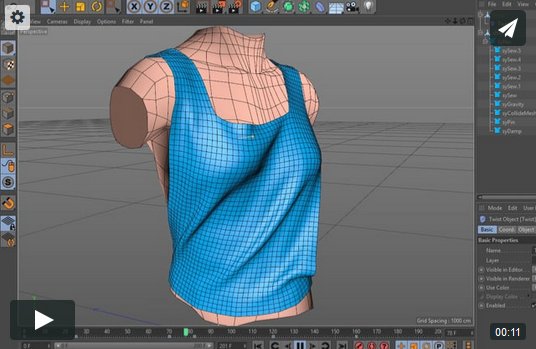

So this first flag, it's a three by three polygon, and with that cloth engine enabled, what we're going to do is play the timeline, now this is pretty important, so when you're experimenting and going through different iterations of all these settings here to see what works for you, you're going to want to play the timeline. So once that's an editable polygon, you can add the cloth tag. And once you do that, now you've got access to all the sub-object levels, point, edge and polygon mode. Meaning you can't dive in to point mode, edge mode, or polygon mode until you make this editable, and you can do that over here by hitting this button or typing the keyboard shortcut C. You'll notice you can still tweak out these segments, but they're parametric in nature. If you were to work with a straight plane, primitive, make this z so it faces us. If you notice, this icon here has the points and a polygon in the middle.

So our first one's three by three, this one's 20 by 20, 50 by 50 and 100 by 100, and I've got cloth tag on each one of those flags, but what I'm going to do is enable the first one, and one of the first concepts that you need to grasp when working with cloth is that it must be on an editable piece of geometry. And as you can see here, I've got one that's a three by three, in fact, I'll come over here to Display, and enable gouroud shading with lines so you can see the subdivisions. So this video, we're going to take a look at four different cloth simulations.

Because simulations in general can be quite a computationally expensive endeavor, keeping these concepts in mind while building our simulations will allow us to experiment further. There are several different dynamics engines inside Cinema 4D, and all of them rely on good practices in order to attain good simulations and decent viewport interactivity.


 0 kommentar(er)
0 kommentar(er)
